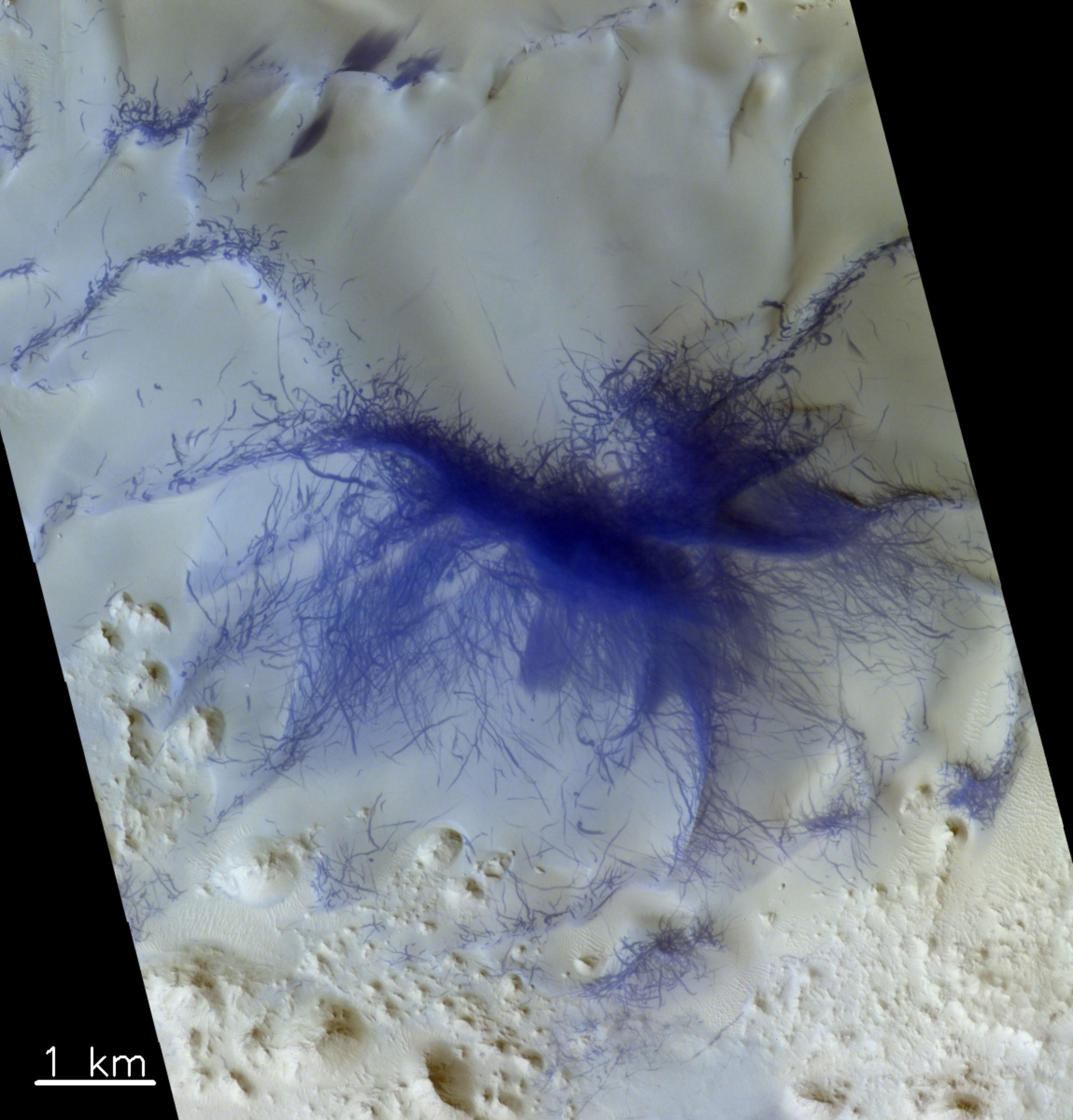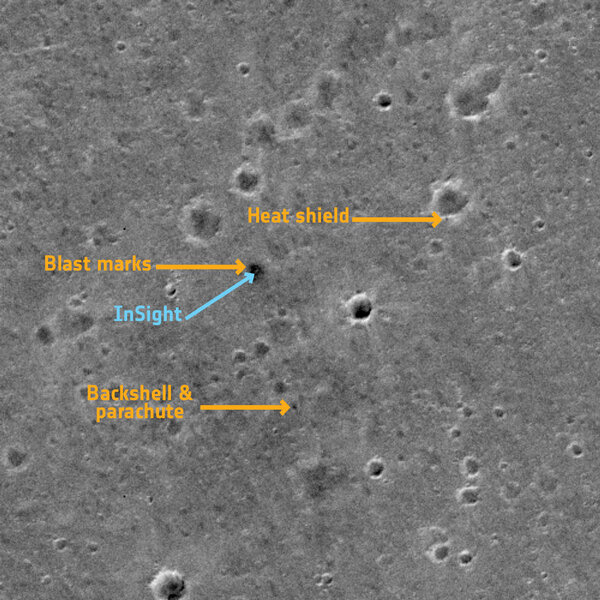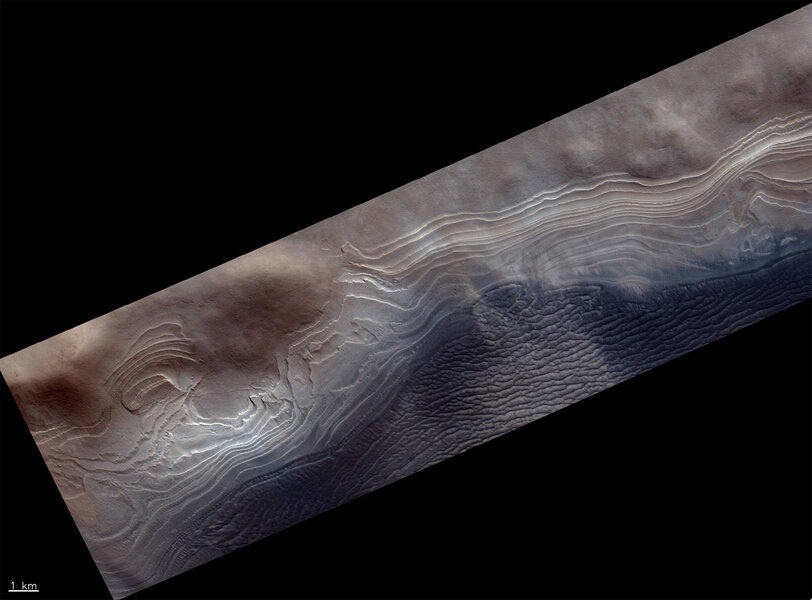Create a free profile to get unlimited access to exclusive videos, sweepstakes, and more!
A panoply of extremely cool ExoMars images taken from high above the Martian surface

Yesterday was the third anniversary of the launch of the European Space Agency/Roscomos' ExoMars Trace Gas Orbiter (TGO). It entered orbit around the red planet in October of that year and began examining the atmosphere of Mars, especially to get a handle on how much methane is there and where it might be coming from (traces of it have been seen on and off for years, but there's no single good explanation for it).
Besides a lot of equipment to detect atmospheric gases, TGO also has the Colour and Stereo Surface Imaging System, or CaSSIS, which has been taking high-resolution images of the Martian surface since it arrived.
As an anniversary gift to us, ESA and Roscosmos released a whole pile of very cool images. Here are a few…
Not the prettiest per se, but very cool, is an image of NASA's Mars InSight lander. The lander itself sits in the blackened scorch mark left by its landing retrorockets, a barely visible blip (including its circular solar panels which go out to either side, InSight is about 6 x 2 meters in size). The heat shield which protected it during its initial descent into the atmosphere is off to the upper right, on the lip of a crater, while the parachute and the backshell that attached it to the lander, dropping it through the middle atmosphere, lies to the lower right.
I'll note that TGO had a lander on board, Schiaparelli, that crashed into the surface when a software glitch caused it to fire its retrorocket too early. That impact site has been seen by NASA orbiters (see that link in the previous sentence), so it's nice to see TGO spot NASA landers.
Although this is lower resolution than what we might see via HiRISE on Mars Reconnaissance Orbiter, every image we get of landings sites — besides being utterly cool — helps scientists understand the context of the lander, plus monitor any conditions that might be changing with time.
But if you want pretty, well, I got pretty:
Whoaaaa. This is not a natural color image; though the specifications weren't with the image I suspect an unusual filter arrangement or some color tweaking was used to make this particular shot. What you see as blue here is actually most likely gray basalt, volcanic rock that is everywhere on Mars. Also pervasive is rust-colored dust, fine grained particles almost like milled flour. The reason it's rust colored is because, well, it's rust. Literally iron oxide. The teeny grains coat rocks all over the place.
Unless wind picks up the dust and blows it around. What you're seeing here is a long basaltic ridge running left to right, covered in dust (making it look smooth; compare it to the higher mounds to the lower left). So what's all that "fur"?
I love this: They're tracks left by dust devils! These are vortices that are common on Mars (and Earth), formed when warm air just above the surface rises into cooler air. It starts up a convection pattern with cool air sinking as warm air rises. If a gust of wind comes along it can lift that horizontally circulating cylinder vertically, creating what looks like a rather weak tornado. On Mars these can get huge, and some areas are prone to them.
Clearly, this is a spot that has quite a few! The tracks you see are where they've lifted up the lighter dust to reveal the darker basalt underneath. Interestingly, they seem to form near the tops of ridges. I suspect that has to do with orographic lift, where wind has to rise up to blow over obstacles. It's common on Mars (and in the Rocky Mountains where I live), and may be a part of the dust devil formation process in this image.
OK, one more, because it's amazing:
That is a mound a few hundred kilometers north of the Martian south pole, and as you can see it has lots of layers to it. These polar layered deposits are all over the place around the southern pole, stretching for over a thousand kilometers. They're nearly pure water ice mixed with dust, and are deposits laid down year after year, one on top of the other. As it erodes away at the edges it creates the terracing, almost like a contour map of the topography.
By studying these layers scientists can learn about the climate of Mars from long ago, revealed for all to see. I'd love to see a lander set down near there someday, because the science would be amazing. But I won't kid myself: The pictures would be gorgeous.
Speaking of, there are quite a few more images from CaSSIS on the ESA website, so go take a look. With multiple countries studying this planet now we're learning more about it than we ever have. It's a richly diverse world, with a lot of history that can put our own in perspective. We have only (literally) scratched the surface; TGO has only been there three years, for example.
What will we see, what will we know, about it 50 years from now?





























